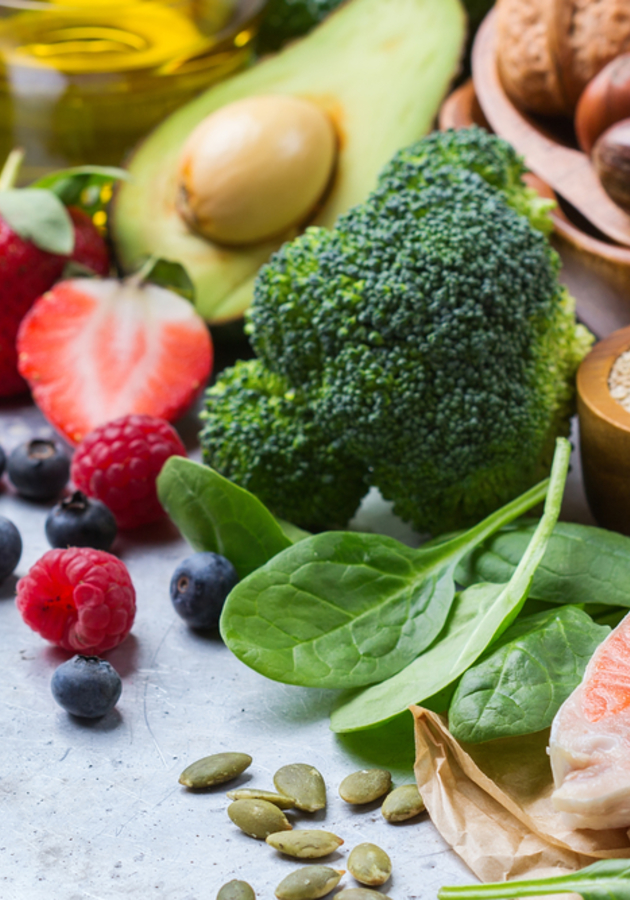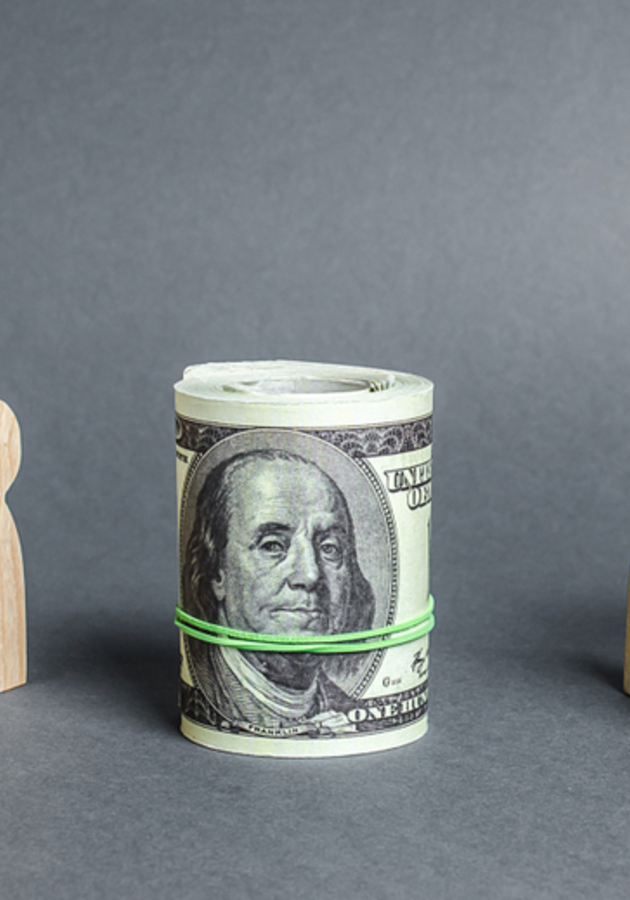Each year, millions of people worldwide die of chronic diseases such as cancer, stroke, diabetes, obesity, or heart disease. Even though advances in drug treatments continue to lower this number, we cannot solely rely on them, mostly because of the enormity of their costs. Is there a cheaper way to beat disease? In ‘’Eat to Beat Disease,’’ medical doctor William W. Li suggests that the answer lies in our food choices. So, get ready to learn how you can use food as a weapon against disease!
Health is an active state
To understand the benefits of food on our health, we first need to upgrade the common definition of health. Most people identify health with the absence of disease. However, Li says health is much more than that - it is an active state which keeps our cells and organs functioning smoothly. There are five health defense systems in our bodies that protect us from various diseases and are the foundations of our health. They are angiogenesis, regeneration, microbiome, DNA protection, and immunity. Some of them can even reverse heavy diseases, such as cancer.
Imagine your body is a medieval fortress. As you may know, each fortress had stone walls for protection against the enemies. Apart from walls, numerous built-in defenses would become apparent in the moments of an invasion, such as the talus, the trou de loup, and murder hole. Li says our health defense systems work in the same way - they protect our bodies from within in moments of disease invasion.
Our diet activates each of the defense systems. Therefore, when you know which food supports each health defense, you can maintain health and beat disease with your diet. But, where can you inform yourself about the foods that are beneficial to your health? If you go to your doctor, for instance, they will tell you that a bad diet is linked with poor health. Unfortunately, that is usually all the information you can get from them. Li says that is because they are not educated to advise their patients about specific food choices. As a medical doctor, the author often had situations when his patients would ask him how they could use food to improve their health. He did not know which answer to give them, either. For this reason, he started researching the effects of particular foods on our health defense systems. He included the results of his research in ‘’Eat to Beat Disease,’’ which can serve both doctors and patients to inform themselves about the right food choices.
Our defense systems
To tap into the healing powers of defense systems, we first need to know how they defend our bodies. Let’s begin with angiogenesis. It is a process responsible for growing and maintaining blood vessels whose primary role is delivering oxygen and vital nutrients to all of our organs. When it comes to diseases such as cancer, angiogenesis prevents it from developing by cutting out the blood supply and nutrients it needs to grow. The formation of microscopic cancers in our bodies happens every day as an inevitable consequence of mistakes occurring in the DNA during cell division. However, these cancers are harmless, as long as angiogenesis prevents them from enlarging and invading other organs.
While angiogenesis is responsible for growing new blood vessels in our bodies, stem cells grow and maintain our organs. They repair, replace and regenerate dead and worn-out cells, when needed. For instance, your small intestine regenerates every two to four days. Your lungs and stomach - every eight days. So, without stem cells, these organs would stop working within a few days.
The microbiome is a name for ‘’good’’ bacteria that interact with our cells and organs to defend our bodies. Doctors once considered all bacteria harmful. However, recent research has shown that we cannot live without the majority of bacteria since they promote good health. For example, some bacteria release metabolites that can protect against diabetes. One type of bacteria called Bifidobacteria helps in reducing stress and anxiety. In general, bacteria influence all of the defense systems. That being the case, they are crucial for our well-being.
Li defines DNA as our ‘’personal genetic blueprint.’’ Apart from carrying the genetic information passed from parents to children, DNA keeps you alive and enables your normal functioning. How? By defending and protecting your body against the consequences of damages that cell reproduction, unhealthy food, polluted air, and various infections might cause.
Lastly, the best-known health defense system is the immune system. It keeps us from being infected, fights against viruses, and prevents us from getting sick. Its true power lies in its ability to kill abnormal cells before they grow into something more dangerous. Hence, the immune system provides the first line of defense against cancer and other diseases.
Boost your defense systems with these foods
There are several ways we can prevent diseases, the most common being cutting down on red meat and sugar, quitting smoking, and getting regular exercise. However, eating the right food is the most effective for fighting against diseases, as it directly influences your body’s defense systems. Don’t you think it is encouraging that your journey to optimal health begins by going to the grocery store?
To support angiogenesis, you should eat more soybeans, tomatoes, cheese, seafood, chicken and drink coffee and red wine regularly. Soybeans were among the first foods found to influence angiogenesis. In 1993, Greek scientist Theodore Fotsis discovered that the urine of Japanese people eating food rich in soy contained genistein - a compound that stops the growth of four different types of cancer cells. Numerous other studies have confirmed that people who eat more soy foods have a lowered risk of breast and prostate cancer and coronary artery disease.
Dark chocolate, fish oil, green beans, raspberries, green tea, and beer have beneficial effects on our stem cells. Take green tea as an example. A study conducted by Korean and Japanese researchers discovered that drinking four cups of green tea per day for two weeks increased the number of stem cells circulating in the bloodstream by 43%.
You can boost your microbiome by eating foods such as kimchi, sauerkraut, cheddar cheese, and sourdough bread. If you don’t usually eat sauerkraut, start including it in your diet. Scientists from North Carolina State University found that it contains a bacteria called Lactobacillus plantarum, often found in commercial probiotics. This bacteria is associated with plenty of health-promoting actions, such as stimulating an anti-inflammatory response in intestinal stem cells.
Foods such as spinach, carrots, red peppers, lentils, navy beans, mushrooms, as well as eggs, cod liver oil, sardines, and mackerel enhance our DNA as they contain micronutrients (vitamins A, B, C, D, and E) that are DNA’s building blocks. However, Li says you should keep in mind that eating whole foods brings more benefits than just taking their supplements. So, do not take vitamins or minerals separately, but rather, eat food containing them.
Finally, to stimulate the work of your immune system, eat mushrooms, garlic, broccoli sprouts, blueberries, oranges, strawberries, chili peppers, and pacific oysters.
The 5x5x5 framework
To help his patients prevent and fight against diseases, Li created a nutritional plan called the 5x5x5 framework. It is not a diet for losing weight, but a program that helps you make better food choices, no matter how much you weigh, what you do, or where you live.
Most diets base their plan on elimination, restriction, or deprivation. Li says the 5x5x5 framework is based on your personal preferences regarding food - you can eat whatever you want as long as it benefits your defense systems. For this reason, it is easy to incorporate this framework into your daily life. Moreover, it is adaptable to any diet plan, whether it’s Paleo, low-carb, plant-based, gluten-free, or ketogenic. ‘’The 5×5×5 framework doesn’t exclude anyone, because it is a larger concept into which you can easily integrate other protocols. Anyone can do it,’’ writes Li.
So, what do each of the three fives stand for? We have already learned about the five defense systems in your body - and the first five represents them. The next one refers to five health-defensive foods you should eat every day. Finally, the last five stands for the number of opportunities you have in a day to eat those foods. To summarize - if you eat foods that boost each of your defense systems in at least one of the five meals you have every day, you will improve your overall disease resistance.
There are a few things to keep in mind when using the 5x5x5 framework. First, your life will not always allow you to stick to the right food choices. Li says making healthy food choices regularly will help ‘’balance out the effects of the not-so-healthy choices that we all occasionally make.’’ Second, eat what you enjoy - it will make you stick to this framework forever. Next, try to make your diet plan diverse. ‘’Health payoff does not come from any single item on the menu,’’ says Li. Last, be adaptable - try to stick to the rules of the framework regardless of where you are - at your home, office, or on vacation.
Put 5x5x5 framework into action
Since it is flexible, customizable, realistic, and encouraging for creating good eating habits, sticking to the 5x5x5 is not challenging. If you follow the next several steps, it will be easier for you to put the entire framework into motion.
Step 1: Personalized preferred food list. Create a list of health-defensive foods and drinks that you enjoy consuming. Keep in mind that each of them should benefit one of the defense systems. Also, explore what your other options are. Are there any health-defensive foods you have never eaten? Why don't you try them? You might discover some new healthy favorites.
Step 2: Always carry a list with you. Once you complete Step 1, take a photo of your list with your smartphone. That way, you ensure it is always at hand - when you go grocery shopping or when you need to order a meal at the restaurant.
Step 3: Choose five each day. Each day in a week, go through your list and select five different foods - one for each defense system. What you eat beyond these five foods is your choice (it would be good if they were healthy, as well). Keep in mind that some foods enhance more than one defense system. If that is the case, you need to find more foods for that day - your goal is to hit all five systems with five different types of food. Li even encourages readers to add more than five health-promoting foods to their daily menu if they feel comfortable.
Step 4: Eat the food from your list whenever you want. People usually have five meals a day. The 5x5x5 framework is flexible as it enables you to eat the food from your preferred list in one meal or spread them out over a few meals.
Step 5: Incorporate the 5x5x5 framework into your diet. Li designed the 5x5x5 framework to be compatible with your core diet. So, if you already stick to a certain diet, it won’t be difficult for you to include foods from your personalized preferred food list in it.
Final Notes
Most nutritional guides tell us to deprive ourselves of foods we like. The appealing aspect of ‘’Eat to Beat Disease’’ is that it promotes the opposite approach. Because of it, we have more chances to make healthier food choices and live a long life without disease.
12min Tip
Why don’t you try out some new recipes containing health-defensive foods and drinks that you enjoy consuming.





























